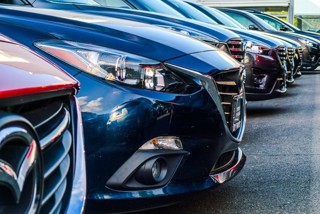By Philip Nothard, retail and consumer price editor, CAP
By far the most controversial debate of last year was around the rise in pre-registration activity.
So it is hardly surprising that it’s still a hot topic as we look ahead to 2013.
Last year saw a total of 2.04m registrations, a rise of 5.3% and a four-year high.
But, before we get too excited, we should remember the all-time record of 2004 was nearly 2.6m units.
Certainly, in terms of registration volumes, there is some way to go before things can be described as a return to ‘normal’.
Manufacturers clearly believe there is room for a push on new cars in the UK but the question now is – does the UK want them?
And, specifically, do dealers want the challenge of selling them?
The other crucial context is the state of new car markets across Europe, combined with an exchange rate that makes the UK a more profitable prospect.
A glance at Europe is enough to reveal the pressure on manufacturers. In December EU car registrations were down 16.3% year-on-year.
This continual poor performance gives an annual reduction of 1,076,562 registrations in a 2012, or -8.2% .
If they are to avoid painful reductions in capacity, the slack must be taken up elsewhere.
According to our research, dealers are not exactly overjoyed at the prospect of higher new car targets.
Indeed, some are actually resisting them even as they await confirmation of their Q1 campaigns.
They have two concerns.
One is around how they will actually achieve the numbers without a substantial increase in real market demand.
The other is the impact more new cars registered will have on the ‘short-term’ used car market.
In the last week in January many franchise dealers still had the remains of last year’s pack cars on the forecourt.
They will have to work very hard, when to convince a potential customer to accept a December-registered new car when it might not represent as attractive an offer as the latest new stock and the V5 won’t feature them as the first owner?
We must acknowledge that the pattern over recent years has been one of German premium brands leading the charge on market share, as the chart below illustrates.
This has led to a certain amount of finger-pointing in relation to the pressures that will come during 2013.
However, it is worth saying that this year’s big ambitions are not limited to those manufacturers.
Significant increases are being demanded almost across the board.
Of course, it is understandable that franchise dealers will be concerned about meeting increased targets at a time when economic recovery is still very faltering.
But will anybody welcome this year’s new car dynamic?
Some car supermarkets are rubbing their hands at the prospect of these pressures forcing prime sub-12 month stock into the market at ever more attractive prices.
We are also aware of moves afoot in some quarters to attempt to limit this availability with more sales direct to consumers along with buy-backs from short-term lease vehicles.
How this will play out in practice remains to be seen.
Other independents will also welcome anything that brings about an increase in the amount of good quality used stock available.
More abundant – and therefore more affordable – cars are crucial to sustainable margins.
In terms of depreciation we do expect increased nearly-new supply to eventually force values down through the 3-4 year old price bands too.
But unless used dealers suddenly experience a severe drop-off in demand, values are not really an issue in the retail sector.
Only when cars are becoming over-age in a market where prices are spiralling downward does this really begin to hurt.

















Login to comment
Comments
No comments have been made yet.